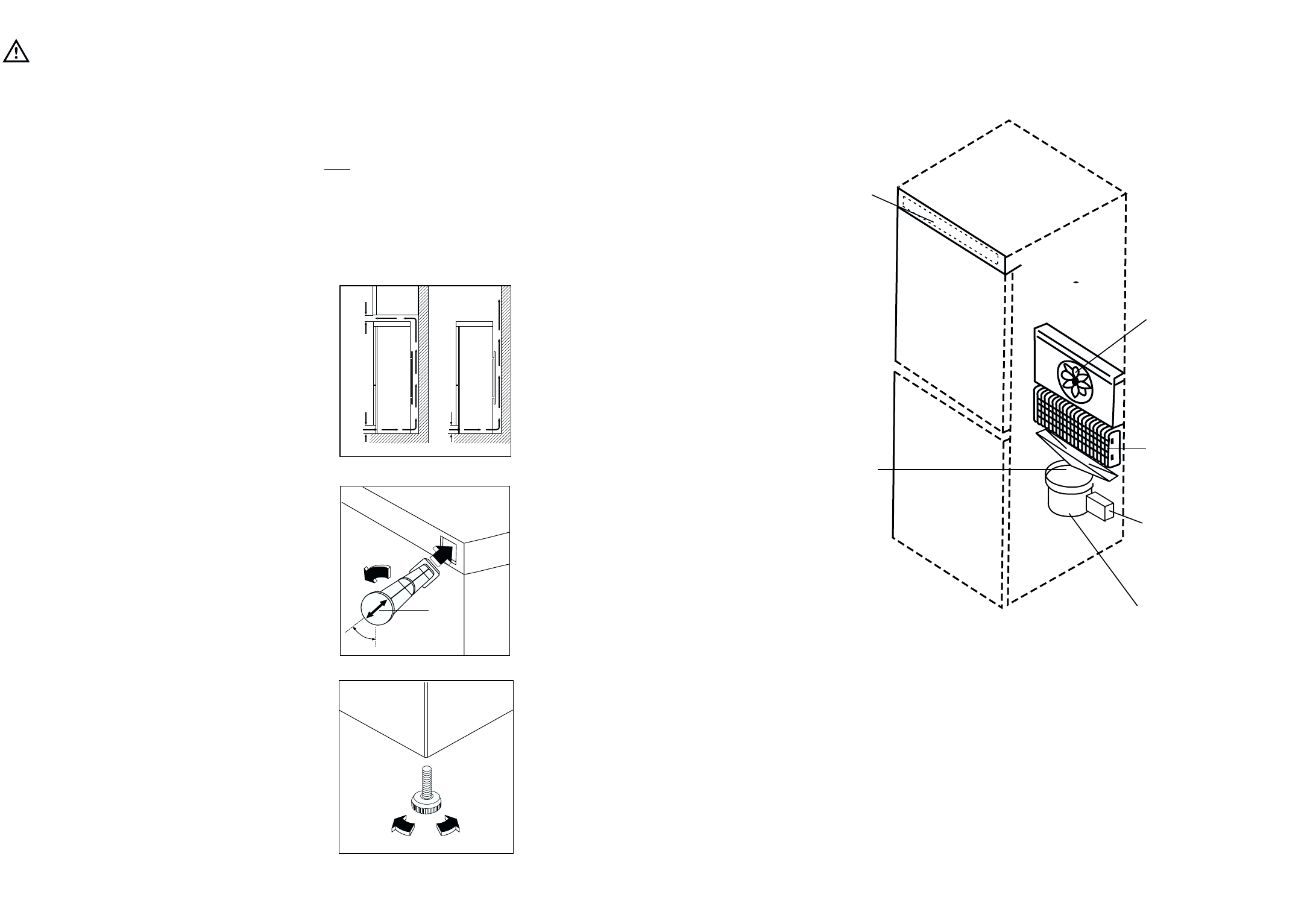
7
Normal Operating Sounds
The advanced design of today’s frost free appliances mean you hear unfamilar noises during everyday
operation. The diagram below describes some of the noises you may hear. These are quite normal and mean
your appliance is operating correctly
The thermostat control will
click when starting or
stopping the compressor.
Defrost water drips into the
drain pan during the defrost
cycle.
The automatic defrost timer
sounds like an electric clock
and clicks in and out of the
defrost cycle.
The fan circulates cold air to
cool the refrigerator and the
freezer compartment and
sounds like air blowing or a
whirring sound.
The flow of refrigerant
through the freezer cooling
coil makes a gurgling noise.
Water dropping on the defrost
heater causes a hissing or
popping sound during the
defrost cycle.
The compressor will make a
humming or pulsating sound
while operating.
14
INSTALLATION
Positioning
This appliance should only be installed at a location
where the ambient temperature corresponds to the
climate classification indicated on the rating plate,
which is located at the left on the inside of the
appliance.
The following table shows which ambient
temperature is correct for each climate classification:
SN +10°C to + 32°C
N +16°C to + 32°C
ST +18°C to + 38°C
T +18°C to + 43°C
It should be located in a dry atmosphere, out of
direct sunlight and away from extreme temperature
e.g. not next to a boiler or radiator, or in a very cold
room e.g. an outhouse, where the temperatures may
fall below 10°C (50°F). If these temperatures are
exceeded i.e. colder or warmer, then the appliance
may not operate correctly.
You should also ensure that air can circulate freely
around the back and the top of the cabinet. There
must also be at least 100 mm (4”) distance between
the top of the cabinet and any overhanging kitchen
furniture (A). Ideally, the appliance should not be
positioned beneath overhanging furniture (B).
There should also be a gap of 25 mm either side of
the appliance. Do not obstruct the space
underneath.
Rear spacers
The plastic bag containing all relevant
documentation also contains two spacers to be fitted
into special holes in the back of the appliance.
Fit the spacers into the holes, taking care to ensure
that the arrow (A) is positioned as shown in the
diagram. Then turn them through 45° (arrow (A)
vertical) until they lock into place.
DO NOT install in places with restricted ventilation.
Adjust the level of the appliance by screwing out the
adjustable foot, or feet, at the bottom of the cabinet
using your fingers or a tool (see figure).
D200
NP002
100 mm10 mm
10 mm
A
B
Warning
IF YOU ARE DISCARDING AN OLD APPLIANCE
THAT HAS A LOCK OR CATCH ON THE DOOR,
YOU MUST ENSURE THAT IT IS MADE
UNUSABLE TO PREVENT YOUNG CHILDREN
BEING TRAPPED INSIDE.
PR60
A
45°
Important
It m
ust be possible to disconnect the appliance from
the mains power supply; the plug must therefore be
easily accessible after installation.
Depending upon the position which you choose for
your appliance, you may wish to reverse the way in
which the door opens. To do this, refer to instructions
on “Door reversal directions” paragraph.












